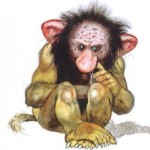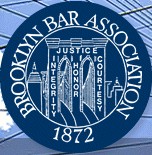The LAW FIRM OF DAYREL SEWELL, PLLC is pleased to announce that Mr. Sewell will be the moderator of the upcoming panel discussion, Advanced Technology and Global Security: Friend or Foe, held by The Johns Hopkins University NYC Law Affinity Group at the Princeton Club in New York City at 6:30 p.m. on Tuesday, April 26, 2016. For registration details and more, click on the event name above.
We have seen the emergence of technology into every facet of our daily lives. Social media and cell phones are indisputably ubiquitous. The result, in part, is the compilation of vast amounts of data on each individual. Access to this data gives unprecedented insight into our privacy by government, industry and the criminal element. How they choose to use this data is of concern to all.
People are increasingly aware of the dilemma between privacy and global security. According to the Wall Street Journal, FBI Director James Comey said that the FBI paid more than $1 million for a hacking tool that opened the iPhone of a terrorist gunman in San Bernardino, California.
The rapid growth of technology has created unexplored legal challenges, civil liabilities, social consequences, and potential for incursion of individual privacy. Couple these issues with the legitimate requirements of law enforcement and the intelligence community and you have a variety of questions around law, policy and practice. Join the panel with Mr. Sewell in a dynamic discussion covering all of the issues outlined and more!
Author: sewellnylaw
The Duality of the U.S. Supreme Court’s Janus Decision
The Duality of the U.S. Supreme Court’s Janus Decision
The LAW FIRM OF DAYREL SEWELL, PLLC is pleased to announce its latest publication, “The Duality of the U.S. Supreme Court’s Janus Decision”, appearing in the 2015 American Bar Association Securities Litigation Fall Newsletter ( See The Duality of the U.S. Supreme Court’s Janus Decision ). 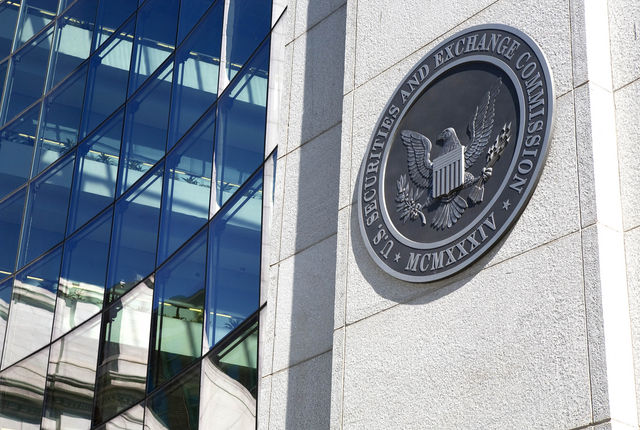 Section 10(b) of the Securities Exchange Act of 1934, and Rule 10b-5 promulgated thereunder prohibit, among other things, the making of untrue and misleading statements of fact in connection with the purchase and sale of any security. In light of this prohibition, a seminal question is who has the liability for making the untrue or misleading statement? The United States Supreme Court addressed this question in its decision in Janus Capital Group, Inc. v. First Derivative Traders, 131 S. Ct. 2296 (2011). The Janus decision made an impact on the securities fraud landscape. It initially appeared to be a well-constructed guiding principle, yet different courts have come to disparate conclusions with respect to its application; thus creating the “duality” that exists – ironically – in the aftermath of the Janus decision. In Janus, the Court held that only a person who has the “ultimate authority” over a statement, including its content and whether and how to communicate it, can be the “maker” of the statement for purposes of Section 10(b) and Rule 10b-5. The Janus Court held that the investment advisor to a mutual fund cannot be primarily liable under Section 10(b) for statements made in in the fund’s prospectus because the investment advisor did not have the ultimate authority in making the statements. The Court held that to “make” these statements for purposes of rule 10b-5, the alleged maker must have “ultimate authority over the statement, including its content and whether and how to communicate it,” and that the fund managers did not have that authority. Janus, 131 S. Ct. at 2302. The Court concluded saying it is the entity that has control over the content of the statements and the authority of how and when to make them, that will have the primary liability. Id. at 2301. The government’s broader view of interpreting the word “make” as “create” thereby extending the primary liability to all parties who had a significant role in the creation of the misinterpretations, and the dissent’s broader view of interpreting the “maker” based on the facts and circumstances of the particular case, were both rejected. Id. at 2311. You are encouraged to comment and receive free updates by subscribing to the firm’s Blog and Press Release sections.
Section 10(b) of the Securities Exchange Act of 1934, and Rule 10b-5 promulgated thereunder prohibit, among other things, the making of untrue and misleading statements of fact in connection with the purchase and sale of any security. In light of this prohibition, a seminal question is who has the liability for making the untrue or misleading statement? The United States Supreme Court addressed this question in its decision in Janus Capital Group, Inc. v. First Derivative Traders, 131 S. Ct. 2296 (2011). The Janus decision made an impact on the securities fraud landscape. It initially appeared to be a well-constructed guiding principle, yet different courts have come to disparate conclusions with respect to its application; thus creating the “duality” that exists – ironically – in the aftermath of the Janus decision. In Janus, the Court held that only a person who has the “ultimate authority” over a statement, including its content and whether and how to communicate it, can be the “maker” of the statement for purposes of Section 10(b) and Rule 10b-5. The Janus Court held that the investment advisor to a mutual fund cannot be primarily liable under Section 10(b) for statements made in in the fund’s prospectus because the investment advisor did not have the ultimate authority in making the statements. The Court held that to “make” these statements for purposes of rule 10b-5, the alleged maker must have “ultimate authority over the statement, including its content and whether and how to communicate it,” and that the fund managers did not have that authority. Janus, 131 S. Ct. at 2302. The Court concluded saying it is the entity that has control over the content of the statements and the authority of how and when to make them, that will have the primary liability. Id. at 2301. The government’s broader view of interpreting the word “make” as “create” thereby extending the primary liability to all parties who had a significant role in the creation of the misinterpretations, and the dissent’s broader view of interpreting the “maker” based on the facts and circumstances of the particular case, were both rejected. Id. at 2311. You are encouraged to comment and receive free updates by subscribing to the firm’s Blog and Press Release sections.
Redskins Trademark Fumble
Redskins Trademark Fumble
The LAW FIRM OF DAYREL SEWELL, PLLC is pleased to announce that Messrs. Sewell’s and Fine’s recent, featured publication, “The “Redskins” Trademark: Turn-over on Downs”, appears in this month’s IPFrontline newsletter (Trademark Turn-over on Downs).
For decades, the National Football League’s “REDSKINS” trademarks have been under siege. Activists, concerned citizens, Native American groups, lawyers, and politicians have boisterously levied meritorious arguments against a trademark that has defined an American professional football team for almost a century. While this coalition has attracted a great deal of societal attention, it has only recently secured judicial support.
For decades, the NFL has stood firmly behind its “Redskin” trademark, as has the majority of Redskins fans. The term “redskin” subsequently no longer enjoys widespread use in America as a word describing the Native American people. The case, Pro-Football Inc. v. Blackhorse, offers an extensive analysis of the term and its implications. After carefully weighing the evidence, the Eastern District of Virginia ultimately determined that the term “redskin” is disparaging to the Native American population, and is subsequently undeserving of continued federal registration.
In sum, the Eastern District of Virginia affirmed the TTAB determination that the term “redskins” would not enjoy continued registration as a trademark on the basis that the term is, and was always, likely to disparage a “substantial composite” of the Native American population.
Today, it is largely undisputed that the term “redskin” is, by definition, offensive as a descriptor for Native Americans. Fast-forwarding, several years later, the NFL’s Washington Redskins team is now known as the Washington Commanders; it was only a matter of time before the team’s ownership wilted under the mounting legal, economic, and public policy pressures.
You are encouraged to comment and receive free updates by subscribing to the firm’s Blog and Press Release sections.
Musical Litigation Groove
Musical Litigation Groove
Musical Litigation Groove – The LAW FIRM OF DAYREL SEWELL, PLLC is pleased to announce that Messrs. Sewell’s and Ng’s recent, featured publication, “Pharell Williams and Robin Thicke told they “Got To Give It Up””, appears in this month’s IPFrontline newsletter. In March 2015, a federal jury in Los Angeles ordered Robin Thicke and Pharrell Williams, singers of the hit song “Blurred Lines,” to pay over $7 million in damages and earned profits to the family of Marvin Gaye, singer of the chart-topping 1977 song “Got To Give It Up,” after determining that the two were guilty of copyright infringement. See Pharrell Williams, et al. v. Bridgeport Music, Inc., et al., 2015 WL 1476803 (C.D. Cal. Mar. 10, 2015). The verdict adds increasing uncertainty for the music industry with the finding of substantial similarity between the two songs, and hence copyright infringement, but its ramifications may have also spawned a shift in copyright infringement litigation that puts musicians and record labels on alert. 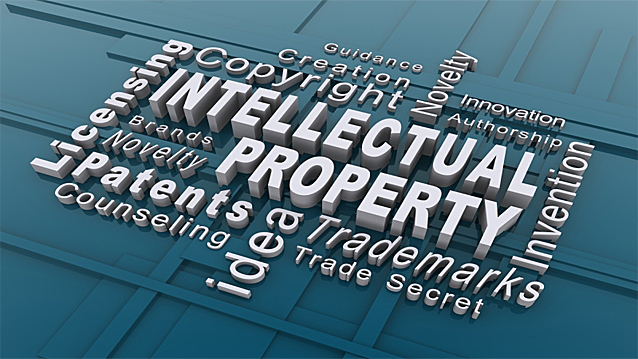 The test for copyright infringement relied on whether a reasonable and average lay observer would recognize an alleged infringing piece of work as having been appropriated from a copyrighted work. The jury had to decide whether the two songs were similar enough in any way to establish some evidence of copying. The jury was not to give any weight to the amount of elements that were dissimilar or those dissimilar elements themselves. This particular instruction proves challenging in that it is a perspicacious analysis to accurately explain to jurors and just as difficult, if not harder, for jurors to properly apply. The music industry argues that this current test severely limits and restricts an artist’s ability to create music. In this particular case, the jury relied heavily on the composition of the sheet music in reaching a decision of infringement. From the sheet music, along with conflicting testimonies on the similarities and differences of the two songs, the jury concluded that the two songs were sufficiently similar. However, what the jury precisely found to be similar remains unknown. There are many elements in all music that are not embodied by the sheet music, including tone, mood, style, and feel, yet play an integral part in forming the identity of the song. These elements simply cannot be seen on a piece of paper. These essential aspects of a song help to create expressive, original works, but at times are non-dispositive in such analyses for copyright infringement. You are encouraged to comment and receive free updates by subscribing to the firm’s Blog and Press Release sections.
The test for copyright infringement relied on whether a reasonable and average lay observer would recognize an alleged infringing piece of work as having been appropriated from a copyrighted work. The jury had to decide whether the two songs were similar enough in any way to establish some evidence of copying. The jury was not to give any weight to the amount of elements that were dissimilar or those dissimilar elements themselves. This particular instruction proves challenging in that it is a perspicacious analysis to accurately explain to jurors and just as difficult, if not harder, for jurors to properly apply. The music industry argues that this current test severely limits and restricts an artist’s ability to create music. In this particular case, the jury relied heavily on the composition of the sheet music in reaching a decision of infringement. From the sheet music, along with conflicting testimonies on the similarities and differences of the two songs, the jury concluded that the two songs were sufficiently similar. However, what the jury precisely found to be similar remains unknown. There are many elements in all music that are not embodied by the sheet music, including tone, mood, style, and feel, yet play an integral part in forming the identity of the song. These elements simply cannot be seen on a piece of paper. These essential aspects of a song help to create expressive, original works, but at times are non-dispositive in such analyses for copyright infringement. You are encouraged to comment and receive free updates by subscribing to the firm’s Blog and Press Release sections.
Robin Thicke Pharrell Williams Pay 5 million marvin Gaye Estate News
Frontline Article from Frontline Law Firm
Frontline Article from Frontline Law Firm
The LAW FIRM OF DAYREL SEWELL, PLLC is pleased to announce that Messrs. Sewell’s and Ng’s recent, featured publication, “A ‘Generic’ Victory for Specific Fact-Findings”, appears in this week’s IPFrontline newsletter (see hyperlink below).
On January 20, 2015, the U.S. Supreme Court issued a 7-2 decision holding that the Federal Circuit must apply a “clear error” standard of review when assessing a district court’s ruling on the validity of a patent. See Teva Pharm. USA, Inc. v. Sandoz, Inc., No. 13-854, 574 U.S. ___ (Jan. 20, 2015). The Supreme Court makes clear that the Federal Circuit must apply a “clear error,” not a de novo, standard when reviewing a district court’s conclusions of subsidiary factual findings made during claim construction proceedings. The decision will send the case back to the U.S. Court of Appeals for the Federal Circuit for further review allowing Teva Pharmaceuticals Industries Ltd. (Teva) to continue its sales of Copaxone without competition from generic drugmakers.
IPFrontline is a web magazine about intellectual property. The IPFrontline electronic newsletter lands in more than 15,000 e-mail boxes every week, ensuring timely delivery of top stories and articles appearing in IPFrontline online. You are encouraged to comment and receive free updates by subscribing to the firm’s Blog and Press Release sections.
Myriad Back in Court on Patent Subject Matter Eligibility
On June 13, 2013, the Supreme Court issued a unanimous decision holding that “genes and the information they encode are not patent eligible simply because they have been isolated from the surrounding genetic material.” See Association for Molecular Pathology v. Myriad Genetics Corp. (AMP), 133 S. Ct. 2107, 2120 (2013). Attorney Sewell’s publication entitled “Unanimous U.S. Supreme Court and Angelina Jolie: BRCA1 & BRCA2 Patentability” is widely disseminated, well-received by his peers, and sparks considerable commentary.
Background
In somewhat of a twist, the Supreme Court’s decision against the patentability of isolated DNA prompted more—not less—litigation by Myriad regarding gene patents. Between 1997 and 2013, Myriad’s revenue from its BRACAnalysis test steadily increased, and totals more than $2 billion. BRACAnalysis is a genetic test that confirms the presence of BRCA1 or BRCA2 gene mutations, responsible for the majority of breast and ovarian cancers. Myriad earned that revenue by carefully guarding its patent rights and preventing others from providing screening tests for the BRCA1 and BRCA2 genes. From the mid-1990s, until the Supreme Court’s AMP decision, Myriad was the lone provider of full-sequence BRCA1 and BRCA2 tests in the United States. Within days of the Supreme Court’s AMP decision, Defendant Ambry Genetics Corporation announced plans to sell tests less expensive than Myriad’s to screen BRCA1 and BRCA2 genes. Ambry Genetics Corporation is a clinical diagnostic and genomic services company in Aliso Viejo, California. Defendant now offers a menu of at least six tests that include screening for BRCA1 and BRCA2: a combined BRCA1/BRCA2 test, BRCAPlus, BreastNext, PancNext, Ova Next, and CancerNext. Defendant’s BRCA1/BRCA2 test is available for $2,200—substantially less than the price for comparable testing offered by Myriad.
Soon after Defendant Ambry made its announcement, Myriad filed a complaint in the District Court of Utah alleging that Ambry’s genetic testing infringes several of Myriad’s patents. Myriad also moved for a preliminary injunction to enjoin Defendant Ambry from sales or offers to sell “genetic tests including a BRCA1 or BRCA2 panel”. Ambry opposed the motion, alleging that the claims were invalid under 35 U.S.C. § 101 et seq. The district court divided the Myriad gene patent claims at issue into the Primer Claims and the Method Claims.
On March 20, 2014, the Utah District Court held that Plaintiffs are not entitled to a preliminary injunction because “although Plaintiffs have shown they are likely to be irreparably harmed if an injunction does not issue, Defendant has raised substantial questions concerning whether any of the patent claims at issue in Plaintiffs’ Motion are directed toward patent eligible subject matter under 35 U.S.C. § 101”. Myriad then appealed to the Federal Circuit the denial of its motion for a preliminary injunction.
U.S. Federal Circuit Court of Appeals
On October 6, 2014, Chief Judge Prost and Judges Dyk and Clevenger of the U.S. Court of Appeals for the Federal Circuit heard oral argument in the interlocutory appeal of the Utah district court’s denial of Myriad’s motion for preliminary injunction against Ambry Genetics. In re BRCA1- and BRCA2- Based Hereditary Cancer Test Patent Litigation, Case Nos. 14-1361, -1366. The two main issues that dominated the argument are: 1) the correct implementation of the test for patent eligibility; and 2) the application of this test to probes and primers. The impact on the biotechnology industry was also discussed.
Jonathan E. Singer, counsel for Myriad, began by arguing that both the Federal Circuit and the Supreme Court had previously acknowledged that Myriad was entitled to patent some applications of their newly-discovered gene sequence and tools designed specifically to utilize that sequence. Myriad argues that primer pairs are patent subject matter eligible under 35 U.S.C § 101 because the pairs are structurally and functionally different than a single fragment of DNA. Counsel for Myriad also argued that, as a whole, the method of screening for alterations on the BRCA genes involves steps of the method claims, when considered together, effect an improvement in a technical field – by using Myriad’s probes and primers that Myriad invented.
With respect to the primer claims, Ambry argues that these claims are patent-ineligible because, in addition to reciting patent-ineligible products of nature, the claims fail under Alice because they are a generic component used to amplify a person’s gene sequence to access the sequence information for the patent-ineligible sequence comparison. As for the method claims, Ambry argues that under Alice, “the combination of unpatentable subject matter and a generic physical application is no more patent eligible than a claim reciting only the unpatentable subject matter.” See Ambry Supplemental Brief at page 3.
Conclusion
What is clear from the district and appellate court arguments is that it does not appear likely that Myriad will be successful in its attempts to preliminarily enjoin Ambry. Additionally, the biotechnology industry is looking towards the Federal Circuit for guidance on the correct implementation of patent subject matter eligibility under Myriad, Mayo, and Alice.
Intellectual property (patents, trademarks, copyrights, trade secret) is all around us and is valuable. The things that we use, watch, and buy are items that were thought of and then put into practice. Attorneys at the New York LAW FIRM OF DAYREL SEWELL, PLLC protect your intellectual property, so that you can maximize value. The majority of our attorneys possesses scientific training and is well-experienced in the litigation and prosecution aspects of patents, trademarks, copyrights, trade secrets, licensing, unfair competition, and more. Our passion and commitment is unmatched and is one of several aspects that set us apart from our peers. We care. As a result, our clients receive legal expertise with individualized attention by attorneys who are invested in the outcome of your matters. Our clients realize the value that this law firm delivers and are committed to a long-term, rewarding, attorney-client relationship.
Patent Troll Paying the Toll
In an exemplary ruling, the United States District Court for the Southern District of New York has ordered the so-called patent troll, Lumen View Technology, LLC (“Lumen”), to pay opposing party FindTheBest.com’s legal fees and other expenses under the fee-shifting provision of 35 U.S.C. § 285. See Lumen View Technology, LLC v. FindTheBest.com, Inc., 1:13-cv-3599 (DLC) (SDNY 2014).
Lumen filed suit against FindTheBest in May 2013 alleging FindTheBest infringed on a computer-implemented method patent that facilitated bilateral and multilateral decision-making. Lumen also filed more than twenty other similar patent infringement claims against various other technology companies during 2012 and 2013. FindTheBest quickly noticed the Lumen claim was a sham due to the fact that FindTheBest technology did not use a bilateral or multilateral decision-making process. The Southern District found Lumen’s suit to be without merit and dismissed the case in November 2013.
After the dismissal, FindTheBest petitioned the court to find Lumen’s suit one of an “exceptional case” under Section 285 and the recent Supreme Court ruling in Octane Fitness, LLC v. Icon Health & Fitness, Inc., 134 S. Ct. 1749 (2014).
In the April 2014 unanimous decision penned by Justice Sotomayor, the Supreme Court ruled that an “exceptional case” under § 285 is one that stands out from others with respect to a party’s litigating position, considering the law and the facts of the case, or the unreasonable manner in which the case was litigated. See Octane Fitness, LLC, 134 S. Ct. at 1756.
The Court found the previous standard in Brooks Furniture Manufactuirng, Inc. v. Dutailier Int’l, Inc., 393 F. 3d 1378 (2005), to be overly restrictive and one that hampered the statutory grant of discretion given to the courts under Section 285. Section 285 imposes only one constraint on a district court’s discretion to award fees, one of “exceptional” cases. In Brooks, a case could only be deemed exceptional when there was material inappropriate conduct, or when parties brought cases in subjective bad faith and were objectively baseless. The Court found this framework to be inconsistent with the text of Section 285.
In step with the Supreme Court’s Octane decision, the Southern District found Lumen’s patent infringement suit to fall under the “exceptional case” standard. As such, the Southern District of New York granted FindTheBest’s motion and found the suit to be a “prototypical exceptional case” shifting payment of FindTheBest’s case fees to Lumen.
Continuing Legal Education, Networking, and Refreshments
The LAW FIRM OF DAYREL SEWELL, PLLC is pleased to announce that Dayrel will be co-presenting a Continuing Legal Education (CLE) course called “Intellectual Property Fundamentals: What Every Attorney Needs to Know” on Monday, May 19, 2014 at the Brooklyn Bar Association.
This Continuing Legal Education event will provide practicing attorneys with a primer to issue spot, analyze, and provide better value to their clients by competently addressing the various intellectual property issues that arise in a myriad of business transactions and lawsuits.
Along with an overview of the main intellectual property areas of patent, trademark, and copyright, this course will provide key practice points, current case law, and analytical framework that are sure to add value to your practice.
While many attorneys lack the STEM background required to become a registered U.S. Patent Attorney, one would be remiss to ignore the significant, valuable intellectual property ramifications of various business decisions. From employment contracts to social media to portfolio licensing, intellectual property is all around us.
Intellectual property (IP) is an overarching term for the legal protection of creations, inventions, products or processes that originate from a person’s mind or ‘intellect’. Generally-speaking, intellectual property fits into one of four distinct categories: patents, trademarks, copyrights, and trade secrets. While some of the principles are similar to real property, there is a plethora of rules and laws to protect such intellectual inventions both domestically and internationally.
The United States Patent and Trademark Office (USPTO) is the federal agency for granting U.S. patents and registering trademarks. In doing this, the USPTO fulfills the mandate of Article I, Section 8, Clause 8, of the Constitution that the legislative branch “promote the Progress of Science and useful Arts, by securing for limited Times to Authors and Inventors the exclusive Right to their respective Writings and Discoveries.” The USPTO registers trademarks based on the commerce clause of the Constitution (Article I, Section 8, Clause 3). Additionally, The USPTO advises the president of the United States, the secretary of commerce, and U.S. government agencies on intellectual property (IP) policy, protection, and enforcement; and promotes the stronger and more effective IP protection around the world.
Refreshments and networking will immediately follow the CLE presentation. The attached flyer contains further course and registration information. You are encouraged to attend this fun and informative event. We look forward to seeing you!
Intellectual Property Fundamentals What Every Attorney Needs to Know
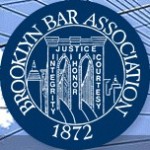
Patent Assertion Entity Settles with Attorney General and Sues the Federal Trade Commission
On January 14, 2014, the Office of the New York State Attorney General (OAG) made a significant contribution in combating the ignominious patent troll.
Attorney General Eric Schneiderman announced that MPHJ Technology Investments, LLC (MPHJ), a so-called “patent troll”, entered into an Assurance of Discontinuance (or settlement) with the OAG stemming from the OAG’s June 2013 investigation of potentially deceptive statements, and other abusive conduct, by MPHJ relating to its patent licensing program which targeted New York businesses as potential infringers of its patents.
See Assurance No. 14-015. The Attorney General’s investigation focused on MPHJ’s use of deceptive and abusive tactics when it contacted hundreds of small and medium-sized New York businesses in an effort to strong-arm them into paying MPHJ for patent licenses of dubious value.
Thankfully, the State of New York is taking corrective measures against patent troll abusive tactics. The settlement establishes guidelines for entities who exemplify patent troll behavior. Amongst other things, the settlement contains guidelines for future patent assertion conduct that, in part, include:
- good faith basis for asserting patents after conducting reasonable diligence;
- providing material information necessary for an accused infringer to evaluate a claim;
- material information necessary to evaluate a reasonable royalty rate;
- no misleading statements about a license fee;
- transparency of ownership of the patent holder and financial interest;
- additional safeguards against deceptive patent assertion conduct; and,
- material information necessary to evaluate the value of a proposed license
It is important to note that the guidelines in the OAG’s settlement are minimum standards and are not a safe harbor. OAG states that “[t]he requirements imposed on MPHJ in the settlement should be viewed by other patent trolls as the minimum standards that such entities seeking to contact New York businesses must follow to avoid liability for unlawful deceptive practices.”
MPHJ v. FTC
In addition to falling squarely within the crosshairs of the New York, Nebraska, Minnesota, and Vermont Attorney Generals, MPHJ is one of the first patent trolls to ostensibly catch the consumer protection watchful eye of the Federal Trade Commission (FTC). Prior to the FTC filing its draft complaint, MPHJ filed its own preemptive complaint on January 13, 2014 in the Western District of Texas against the FTC and its commissioners and directors. See MPHJ Technology Investments v. FTC et al.; case no. 6:14-cv-00011-WSS. As a bit of background, the FTC first sent a subpoena to MPHJ in July 2013, “seeking certain information regarding MPHJ’s patent-related correspondence and enforcement activity” prior to likely seeking a consent judgment or pursuing FTC Act litigation barring deceptive trade practices. FTC also served a subpoena on Farney Daniels, the law firm retained by MPHJ to help with its enforcement campaign.
MPHJ contends that its lawsuit against the FTC arises out of the “unlawful interference and threats by the FTC Defendants against MPHJ and its counsel directed at stopping or impeding the lawful, proper, and constitutionally protected efforts by MPHJ to identify and seek redress for infringement of its U.S. patents.”
To date, the FTC has not filed its reply to MPHJ’s Complaint. Notwithstanding, intellectual property enthusiasts and many interested others anxiously await greater, appropriate patent reform.
Chairman Bar Association Highlight
Chairman Bar Association Highlight
The LAW FIRM OF DAYREL SEWELL, PLLC is pleased to announce that Mr. Sewell’s recent, featured publication, The Ignominious Patent Troll, also prominently appears in the year-end publication of the Brooklyn Barrister.
In Network Protection Sciences, LLC, and similar cases, courts ought to be more willing to utilize sanctions as well as the other methods discussed herein to shutter the courthouse doors to abusive litigation. It is incomprehensible to have these abusive litigation deterrents and not utilize them when the record screams otherwise. Rule 11(c) of the Federal Rules of Civil Procedure offers sanctions for litigation abuses and indicates that reasonable attorney fees can serve as one form of sanctions. Additionally, the Patent Act provides that a “court in exceptional cases may award reasonable attorney fees to the prevailing party.” See 35 U.S.C. § 285. Section 285’s language was first included in the 1946 statutory revision of damage calculations. However, rather than limiting the award to “exceptional cases”, the 1946 statute provided that “[t]he court may in its discretion award reasonable attorney’s fees to the prevailing party.” See 35 U.S.C. § 70 (1946 ed.).
It is understood that there is discretion involved in the sanction-worthy, decision-making process. Nevertheless, if rules that are available are not justly applied to appropriate situations, then there is little speculation that abusive litigation tactics will continue. As Federal Circuit Chief Judge Rader says, “[j]udges know the routine all too well, and the law gives them the authority to stop it. We urge them to do so.” See Randall R. Rader, Colleen V. Chien & David Hricik, Make Trolls Pay in Court, N.Y.TIMES, June 5, 2013, at A5.”
The Brooklyn Barrister is the official publication of the Brooklyn Bar Association. Dayrel looks forward to continuing his leadership roles as Chair of the Brooklyn Bar Association Intellectual Property Committee and Vice-Chair of the Brooklyn Bar Association Real Property Committee.



